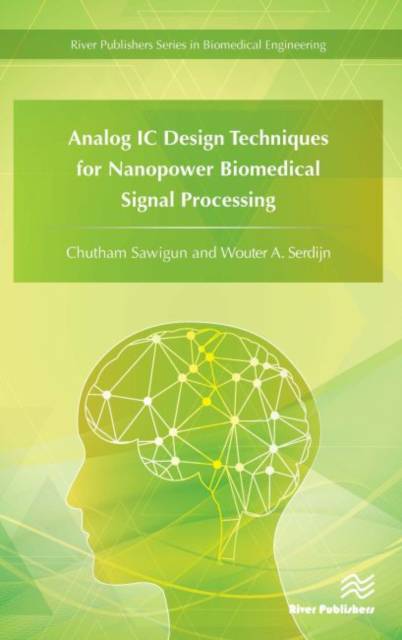
- Afhalen na 1 uur in een winkel met voorraad
- Gratis thuislevering in België vanaf € 30
- Ruim aanbod met 7 miljoen producten
- Afhalen na 1 uur in een winkel met voorraad
- Gratis thuislevering in België vanaf € 30
- Ruim aanbod met 7 miljoen producten
Zoeken
Analog IC Design Techniques for Nanopower Biomedical Signal Processing
Chutham Sawigun, Wouter A Serdijn
Hardcover | Engels
€ 160,45
+ 320 punten
Omschrijving
As the requirements for low power consumption and very small physical dimensions in portable, wearable and implantable medical devices are calling for integrated circuit design techniques using MOSFETs operating in the subthreshold regime, this book first revisits some well-known circuit techniques that use CMOS devices biased in subthreshold in order to establish nanopower integrated circuit designs. Based on the these findings, this book shows the development of a class-AB current-mode sample-and-hold circuit with an order of magnitude improvement in its figure of merit compared to other state-of-the-art designs. Also, the concepts and design procedures of 1) single-branch filters 2) follower-integrator-based lowpass filters and 3) modular transconductance reduction techniques for very low frequency filters are presented. Finally, to serve the requirement of a very large signal swing in an energy-based action potential detector, a nanopower class-AB current-mode analog multiplier is designed to handle input current amplitudes of more than 10 times the bias current of the multiplier circuit. The invented filter circuits have been fabricated in a standard 0.18 µ CMOS process in order to verify our circuit concepts and design procedures. Their experimental results are reported.
Specificaties
Betrokkenen
- Auteur(s):
- Uitgeverij:
Inhoud
- Aantal bladzijden:
- 198
- Taal:
- Engels
Eigenschappen
- Productcode (EAN):
- 9788793379299
- Verschijningsdatum:
- 31/05/2016
- Uitvoering:
- Hardcover
- Formaat:
- Genaaid
- Afmetingen:
- 156 mm x 234 mm
- Gewicht:
- 453 g

Alleen bij Standaard Boekhandel
+ 320 punten op je klantenkaart van Standaard Boekhandel
Beoordelingen
We publiceren alleen reviews die voldoen aan de voorwaarden voor reviews. Bekijk onze voorwaarden voor reviews.








